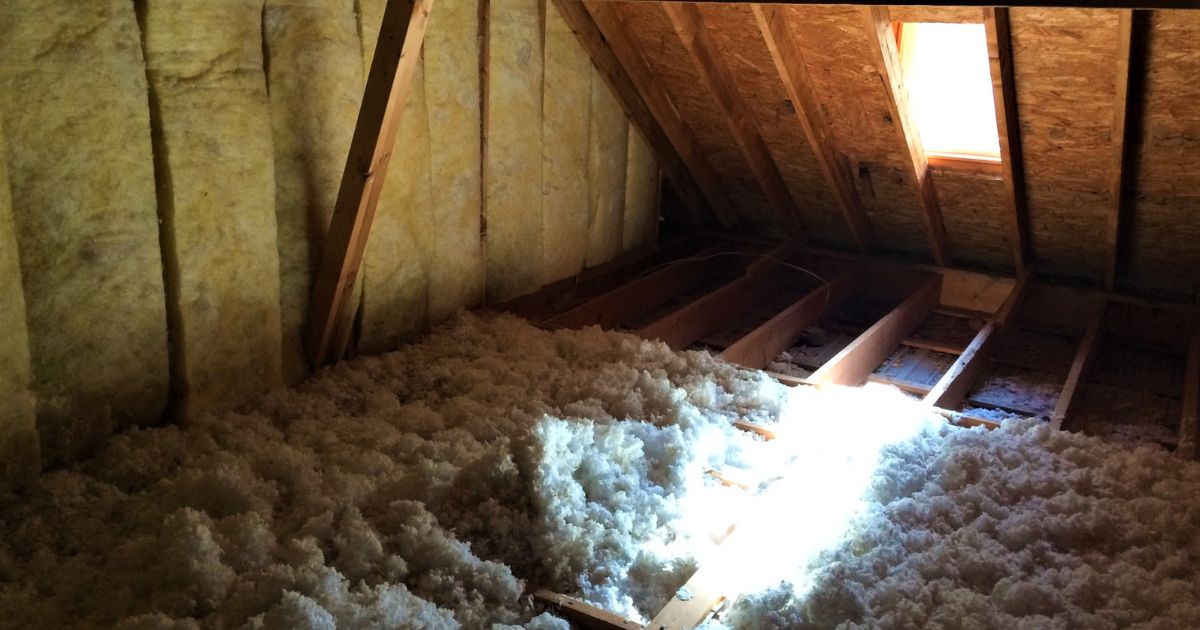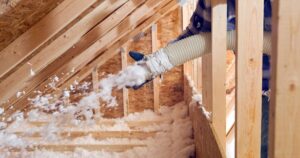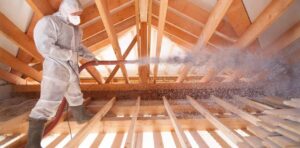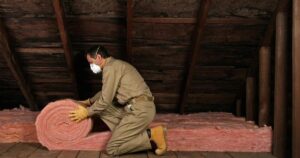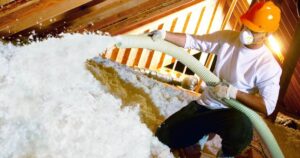You’re facing the challenge of dealing with blown-in insulation in your attic, you’re not alone. Many homeowners find themselves in a similar situation, and it’s essential to understand how to properly remove it to maintain the energy efficiency and safety of your home.
In this comprehensive guide, we’ll elaborate on the complete reasons behind needing to remove blown-in insulation, the key factors involved in the process, and the benefits you can expect once it’s done.
Understanding Blown-In Insulation
Before we dive into the removal process, it’s crucial to grasp what blown-in insulation is and why it’s used in attics. Blown-in insulation, also known as loose-fill insulation, is made of small particles of materials like fiberglass, cellulose, or foam.
It is an efficient method to insulate your attic because it fills gaps and voids, providing a barrier against heat transfer. While it’s effective at improving energy efficiency, there are situations where its removal is necessary.
Reasons for Removing Blown-In Insulation
- Upgrading Insulation
One common reason for removing blown-in insulation is upgrading to a more efficient insulation material. As technology advances, newer insulation materials with higher R-values are developed, making your home more energy-efficient.
- Contamination and Mold
Over time, insulation can become contaminated with dust, debris, or even mold. These contaminants not only reduce insulation’s effectiveness but can also pose health risks to your household.
- Pest Infestation
Pests such as rodents or insects can find their way into your attic and make a cozy home within your insulation. Removing and replacing insulation is necessary to get rid of these unwanted guests.
- Renovations
If you’re planning to renovate your attic or make structural changes to your home, removing insulation is often required. It allows for easy access to the space and ensures a clean slate for the new project.
- Fire Damage
In unfortunate cases of fire damage, insulation can become compromised and should be removed for safety reasons before any repairs or renovations are undertaken.
Key Factors in Removing Blown-In Insulation
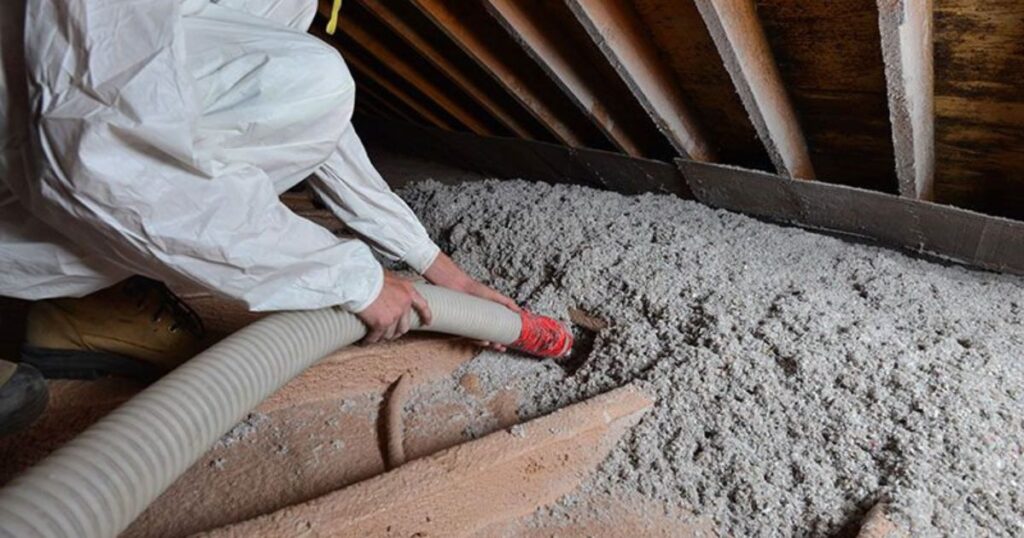
- Safety Precautions
Safety should be your top priority when removing insulation. Wear appropriate protective gear, such as a respirator, gloves, and protective clothing, to prevent exposure to contaminants or fibers.
- Proper Equipment
Removing blown-in insulation efficiently requires specific equipment, such as an insulation vacuum machine. Renting or purchasing the right tools is essential for a smooth process.
- Containment
Containment is crucial to prevent insulation particles from spreading throughout your home. Seal off the attic area and use plastic sheeting to control the insulation during removal.
- Extraction
Using the insulation vacuum machine, extract the blown-in insulation carefully. Start from the farthest corner of the attic and work your way toward the exit to minimize disturbance.
- Disposal
Dispose of the insulation according to your local regulations. Many insulation materials are recyclable, so check if recycling is an option in your area.
Benefits of Removing Blown-In Insulation
- Improved Energy Efficiency
Removing old or contaminated insulation and replacing it with newer, more efficient materials will significantly improve your home’s energy efficiency. You’ll enjoy reduced heating and cooling costs.
- Health and Safety
Getting rid of contaminants, pests, and mold ensures a healthier and safer living environment for your family. It also reduces the risk of allergies and respiratory issues.
- Easy Maintenance
A clean attic with updated insulation is easier to maintain and inspect. You can quickly identify and address any issues in the future.
- Home Value
Improving your home’s insulation and addressing potential issues can increase its market value. Prospective buyers appreciate a well-maintained and energy-efficient home.
The best insulation for ductwork
The best insulation for ductwork is a crucial consideration for maintaining energy efficiency and ensuring your HVAC system operates at its peak performance. There are several insulation materials to choose from, each with its own advantages and suitable applications. Here are some of the top options for insulating ductwork:
Fiberglass Insulation
- Advantages
Fiberglass insulation is cost-effective and readily available. It provides good thermal resistance and is relatively easy to install.
- Suitable for
It is a versatile option and can be used for both heating and cooling ducts.
Foam Board Insulation
- Advantages
Foam board insulation, such as rigid foam, offers excellent thermal resistance and is resistant to moisture. It’s durable and can be used in various applications.
- Suitable for
It is ideal for insulating ducts in damp or humid environments.
Reflective Foil Insulation
- Advantages
Reflective foil insulation, like radiant barriers, reflects heat away from ducts. It is lightweight and can be effective in reducing heat gain or loss.
- Suitable for
Best suited for ducts in hot climates or areas with intense sunlight.
Foil Tape and Duct Wrap
- Advantages
Foil tape and duct wrap can be used in combination with other insulation materials to provide an additional layer of protection and sealing.
- Suitable for
Enhancing the insulation of ductwork and preventing air leakage.
Duct Liner Insulation
- Advantages
Duct liner insulation is designed for the interior of ducts. It provides both thermal insulation and soundproofing qualities.
- Suitable for
Ideal for commercial buildings or residential areas where noise reduction is important.
Polyurethane Spray Foam
- Advantages
Spray foam insulation provides an airtight seal and offers superior insulation properties. It can help prevent air leakage and energy loss.
- Suitable for
When selecting the best insulation for your ductwork, consider factors such as your climate, budget, and the specific needs of your HVAC system. Additionally, ensure that the insulation you choose complies with local building codes and regulations.
Properly insulated ductwork not only saves energy but also improves indoor comfort and air quality. It’s advisable to consult with a professional HVAC technician or insulation expert to determine the most suitable insulation for your specific circumstances.
FAQs
What is HVAC duct insulation?
Duct wrap insulation reduces heat loss or gain through duct walls, conserving energy and controlling moisture condensation.
What is the most common insulation material?
Fiberglass consists of extremely fine glass fibers and is one of the most ubiquitous insulation materials.
What is the most effective insulation?
Expanded polystyrene (EPS) is a premier material for protecting homes, foods, and sensitive materials because of its cost-effective, efficient insulation qualities.
Conclusion
Understanding the reasons for removing blown-in insulation, the key factors involved in the removal process, and the benefits it offers is essential for homeowners. Whether you’re upgrading your insulation, dealing with contamination, or planning renovations.
Take the necessary steps to remove blown-in insulation, and you’ll enjoy a more comfortable and secure living space for years to come.

